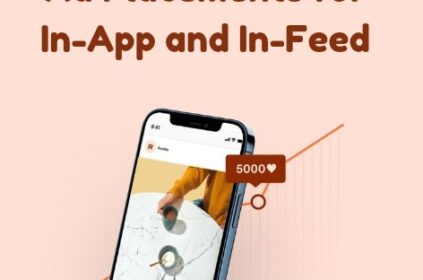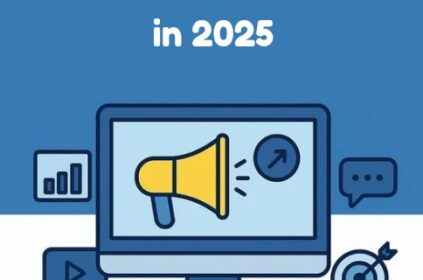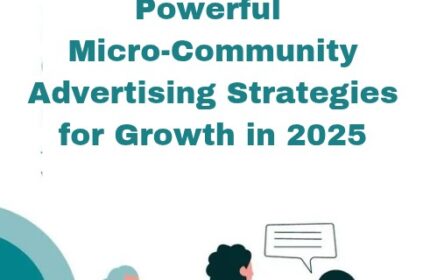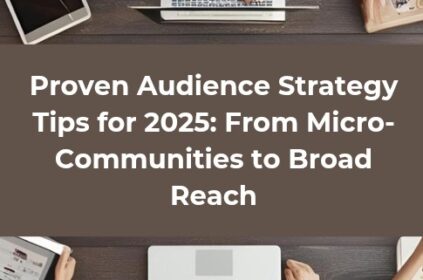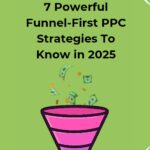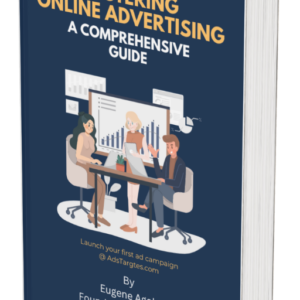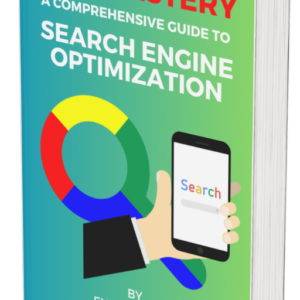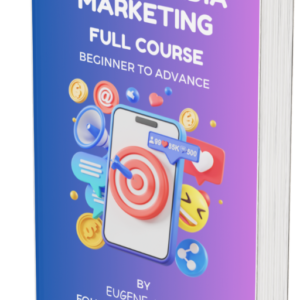There’s a quiet revolution happening inside your inbox.
Every day, millions of readers scroll through newsletters that feel more like personal letters than promotions — and hidden between those friendly paragraphs are ads that don’t look or sound like ads at all.
That’s the power of native advertising in newsletters.
It’s subtle, story-driven, and increasingly profitable. Unlike banner ads or pop-ups that scream for attention, native placements blend seamlessly into editorial content, matching the tone, format, and rhythm of the newsletter they appear in.
When done right, they don’t interrupt the reader’s experience; they enhance it.
But here’s the catch: as newsletter audiences grow more sophisticated and privacy rules tighten, the bar for what qualifies as “good” native advertising has skyrocketed.
Brands can’t just buy space anymore; they have to earn trust, relevance, and resonance.
This is where 2025’s newsletter landscape demands a different kind of ad placement strategy — one built on precision, storytelling, and psychology.
#1. Dedicated Newsletter Sponsorship Placement

A dedicated newsletter sponsorship placement means the advertiser’s message is the main (or sole) content of a newsletter sent, often co-branded with the publisher or newsletter owner.
When you adopt native advertising newsletter placements in the form of a dedicated sponsorship, you create a situation where the subscriber has opted in and receives a clean signal: this edition is supported by the advertiser.
Because the content is clearly defined as sponsored, the integration is clean and the expectations are clear.
From the publisher side, this placement allows full control of the send time, design, subject line, and branding.
For example, the advertiser may get sole branding in the header, a message from the editor referencing the sponsor, one or more branded content sections, and a call to action.
The benefits of such native advertising newsletter placements include a higher perceived value, premium CPMs, and a strong alignment between audience and advertiser message.
However, to make this work well you must retain transparency: clearly mark the sponsorship, ensure the content still serves the reader, and avoid turning the edition into pure hard-sell.
According to a guide by Jeeng, combining email (a trusted channel for Gen Z and millennials) with native ad formats in newsletters generates sustainable success for publishers and advertisers alike.
When you deploy native advertising newsletter placements this way, you’re leveraging the fact that the audience expects value and is accustomed to receiving meaningful content.
Execution tips for this placement: negotiate exclusive sponsorships, define editorial guidelines so the sponsor content aligns with the newsletter voice.
Build a compelling subject line referencing the sponsor in a way that still appeals to the subscriber, and ensure measurement is baked into the send (open-rate, click-through, conversion).
Because the entire newsletter is sponsored, you have the opportunity to integrate the native advertising newsletter placements deeply—such as the editor’s note referencing the sponsor, a case study or story supported by the sponsor, and a subtle call to action.
Done right, this counts as a top-tier native advertising newsletter placement.
#2. In-Content Native Ad Units Within Editorial Newsletter
Another highly effective type of native advertising newsletter placement is embedding native units within a standard editorial newsletter.
Instead of the entire issue being sponsored, this approach places a sponsored segment among regular editorial items.
For example, you might have the primary editorial introduction, followed by three curated content items, followed by a “Sponsor Spotlight” that is clearly labelled, then more editorial items.
Using native advertising newsletter placements in this way allows the advertiser to benefit from the strong engagement of the editorial context while the publisher retains the editorial voice and structure.
Leveraging this placement means good alignment: ensure the sponsored content is relevant to the audience, matches the format and tone of the editorial items (but is clearly marked as sponsored), and does not interrupt or degrade the user experience.
According to LiveIntent, native ads in email newsletters drive higher purchase intent (18%) and 9% higher brand affinity than banner ads when executed properly.
When deploying native advertising newsletter placements this way, you ensure that the ad content feels like part of the flow of the newsletter, rather than an afterthought.
From the publisher’s viewpoint, in-content placements allow monetising without sacrificing the identity of the newsletter.
From the advertiser side, they benefit from the continuity of the audience’s engagement with editorial content before and after the sponsored item.
For best results, use responsive design, match typography and imagery style to the rest of the newsletter.
Include a clear “Sponsored by” label, and track metrics (e.g., click-through from that placement, conversion on landing page) to understand performance of those native advertising newsletter placements.
#3. Recommendation-Engine Style Native Placement at Newsletter Bottom
A third placement strategy is to use recommendation-engine style placements at the bottom of newsletters: “More from our partners” or “Sponsored recommendations” sections.
In this model of native advertising newsletter placements, the advertiser’s content appears alongside other recommended content (editorial or paid) as part of a list of links or visually consistent thumbnails.
This placement works especially well when the newsletter includes curated content and you want to add an advertiser element without disrupting the main narrative.
Since the listing is clearly separated (and labelled) and placed at the bottom, it feels less intrusive, but still benefits from readers who scroll to the end.
The recommendation-style format also benefits from the trust the subscriber has in the newsletter’s curation.
For advertisers this placement of native advertising newsletter placements is efficient: fewer design changes, less disruption, and good visibility especially for engaged readers.
When implementing this placement, ensure the “recommendation” block is styled in the same thumbnail/grid-style as the rest of the newsletter, with a “Sponsored” label.
Also consider rotating partners so the reader doesn’t get “ad fatigue”. Use UTM tracking on the links to measure which sponsored items drive click-through and eventual conversion.
Because this is a native advertising newsletter placement, you want the feel of the content to match the newsletter’s tone while keeping transparency intact.
#4. Integrated Content Series Within Newsletter (Multi-Part Sponsorship)
For advertisers looking for deeper engagement, a multi-part sponsorship series embedded in a newsletter is a powerful form of native advertising newsletter placements.
In this scenario, the advertiser is featured over several newsletter editions (e.g., four weeks) with consistent branding, a story arc, and possibly interactive elements (polls, reader questions, etc.).
This long-form approach allows the advertiser to build narrative, establish credibility, and become part of the reader’s journey.
From the publisher’s perspective, this ups the value of the sponsorship, allows premium pricing, and gives readers a coherent sponsored story rather than a one-off message.
For the advertiser, using native advertising newsletter placements in a series format helps build memory, recall, and potentially intention to act.
Because the audience sees the brand and message repeatedly in the context they trust, the campaign can deliver better outcomes.
Key execution considerations: ensure the series is clearly labelled as sponsored content, coordinate the creative across the series so design and tone are consistent, incorporate measurable actions (clicks, downloads, sign-ups) that track what the native advertising newsletter placements generate.
Also maintain editorial standards: ensure the sponsored series still has value for the subscriber (e.g., insights, data, tips) rather than pure selling.
This way, the native advertising newsletter placements are seen as high-value content and preserve subscriber trust.
#5. Native Placement in Targeted Segment Newsletters

Audience segmentation is increasingly critical in newsletter strategies, and using native advertising newsletter placements within highly targeted segment newsletters is a high-impact tactic.
For example, a publisher might have a general daily newsletter plus niche newsletters (e.g., finance, tech, lifestyle).
Advertisers can buy native spots inside the niche edition most aligned with their offering—e.g., a fintech sponsor in a finance-focused newsletter.
Using native advertising newsletter placements within targeted segment newsletters delivers advantages: higher relevance, better engagement, and more efficient spend for the advertiser.
For publishers this means more segment monetisation potential and better advertiser ROI, which can help build long-term relationships.
Execution steps: ensure segment list is clearly defined with engagement metrics; build ad creative tailored to that segment (language, offer, visuals); ensure the insertion point in the newsletter is appropriate (e.g., after top editorial items in that niche).
Label the placement clearly, use tracking and attribution data to measure the native advertising newsletter placements’ performance.
Over time, build case studies demonstrating that segment-specific native advertising newsletter placements outperform generic placements.
#6. Interactive Native Ad Module in Newsletter (Quiz/Survey)
Another advanced placement format for native advertising newsletter placements is an interactive module—such as a quiz, survey, or interactive infographic embedded within the newsletter.
This raises engagement and differentiates the advertiser message from standard text or image formats.
By embedding interactivity, the advertiser can deepen engagement, collect first-party data (with subscriber permission), and still retain publisher-brand integrity.
For example, the native advertising newsletter placement could include a branded quiz (“Which technology trend are you?”) embedded within the newsletter, with the sponsor branding tied in and a call-to-action to download an insight report or schedule a demo.
The value here is that the format stands out but feels native because it sits within the newsletter environment and provides value to the reader, rather than just selling.
To execute this native advertising newsletter placement effectively: ensure mobile responsiveness, especially given most email opens on mobile.
Keep the interaction simple and quick; test load times; label the sponsorship clearly; and integrate tracking (e.g., quiz completion, link click) so you measure the impact of the native advertising newsletter placements.
From the publisher viewpoint, this format can command premium pricing because of the engagement lever it offers. For advertisers, it offers richer data and deeper engagement.
#7. Co-Branded Content Insertions with Editorial Integration
Co-branded content insertion is a refined form of native advertising newsletter placements where the advertiser and publisher collaborate on custom content that aligns with the newsletter’s editorial mission, and the advertisement is integrated seamlessly with value for the reader.
In this form, the placement might appear as a branded article or commentary within the newsletter—e.g., a thought leadership piece, a case study, or expert commentary—co-written or curated by the publisher but sponsored by the advertiser.
Because this type of native advertising newsletter placement blends editorial integrity and advertiser funding, it can deliver high trust, strong engagement, and smoother reader flow.
It is crucial to maintain transparency and declare the sponsorship clearly so the reader is aware.
Research shows that when native advertising is clearly labelled it improves effectiveness while preserving credibility.
For publishers, co-branded content insertions raise average CPMs and enhance advertiser satisfaction.
For advertisers, they gain contextual alignment, thought leadership positioning, and likely higher-quality leads.
Execution tips: set up a brief aligned with both editorial and advertiser objectives; ensure tone and style match the newsletter yet include sponsor branding; measure engagement metrics (time spent, clicks, conversion) and include attribution to link the native advertising newsletter placements to outcomes.
Also consider repurposing the content on other channels, with proper licensing, to extend the reach of the native advertising newsletter placements beyond just the email.
#8. Sponsored Newsletter Sidebar or Banner Styled as Editorial Module
Although true native advertising is ideally seamless, there remains value in hybrid placements—sidebar or banner modules inside newsletters that are styled to match but are clearly sponsored.
These placements are less immersive than full-content sponsorships, but still count as native advertising newsletter placements because they match the look of the newsletter and reside within the subscriber’s inbox environment.
Such placements may appear in a newsletter template as a right-aligned module or bottom strip, with brand logo, brief copy, and a call to action.
While less immersive than integrated articles or interactive modules, they are simpler to implement, lower cost, and less disruptive to the reader experience.
The key is styling: match fonts, colours, spacing to the newsletter brand, and ensure the module feels part of the environment, yet marked as sponsored.
From an advertiser’s perspective, this is a scalable native advertising newsletter placement: lower complexity, easier to repeat across many sends.
For the publisher, it might be easier to inventory and fill. To execute it well: load the module after the main editorial content, ensure mobile responsiveness, label as “Sponsored” or “Partner Message”, use tracking to tie clicks to conversions, and consider rotating creative so the native advertising newsletter placements don’t become stale.
#9. Embedded Native Video Placement in Newsletter

Video within email is increasingly feasible (or at least a strong animated thumbnail linking to video).
Using native advertising newsletter placements in the form of embedded or linked video content can elevate engagement and storytelling for advertisers.
For example, the newsletter might include a mini-video thumbnail branded by the sponsor, with the context provided as part of the newsletter story flow (e.g., “Watch how this and this happened”), with the advertiser message embedded.
Because people are used to newsletters with rich media and trust the sender, this format allows the advertiser to deliver more than static copy and image, creating an immersive experience.
When you treat the video as part of the editorial narrative (rather than an add-on), you increase the effectiveness of native advertising newsletter placements.
Best practice: include a static first frame for email compatibility, link to a hosted landing page or video player, label the sponsor clearly, include a fallback image for clients that don’t support video, ensure email size stays manageable so load times don’t degrade experience, and tie the video view or click to campaign metrics.
For publishers, this native advertising newsletter placement is premium inventory and can support higher pricing.
For advertisers, the richer format helps storytelling, brand affinity, and higher engagement.
#10. Post-Send Native Amplification & Newsletter Archive Placement
The final placement in this list of native advertising newsletter placements is less about the initial send and more about amplifying the sponsored newsletter content post-send and placing it in archives or on the publisher’s website/native email archive.
In other words, after the newsletter goes out, the sponsored content is archived on the website or in a searchable newsletter archive, giving the advertiser extended reach beyond the initial send.
This placement offers a longer-tail benefit: the sponsored content remains accessible, can be discovered via search, shared, linked, and fed into content-syndication.
From a measurement perspective, it allows tracking of conversions beyond the first send, and gives the advertiser more value for the spend.
For publishers, packaging this as a “send plus archive” offering increases inventory value and can justify higher CPMs.
Implementation: ensure the archive page is published promptly, includes the sponsor branding consistent with the newsletter send, make sure links include UTM tags so you attribute conversions to the native advertising newsletter placements.
Consider adding the archive entry to email reactivation campaigns or retargeting segments, and report on both initial send metrics (opens, clicks, conversions) and archive-driven metrics (pageviews, extended conversions).
This approach turns a one-time newsletter native placement into a sustained asset.
Conclusion
In summary, mastering native advertising newsletter placements means more than simply dropping an ad into an email, it requires thoughtful alignment of the ad format, audience segment, creative approach, and measurement framework.
From dedicated sponsorships to in-content placements, recommendation modules to interactive quizzes, co-branded content to embedded video, and post-send amplification.
All these placements provide viable routes to monetising newsletters or executing high-impact advertising campaigns.
To maximise return, begin by mapping your audience segments and newsletter inventory, align advertiser messaging with audience needs, choose native advertising newsletter placements that match the subscriber experience (rather than disrupting it), ensure transparency via clear labelling, and tie every placement to measurable outcomes (clicks, conversions, downstream value).
As industry data confirms, native formats in email newsletters produce better engagement and stronger brand affinity compared to traditional display units.
With the right planning and execution, native advertising newsletter placements can transform your email channel into a high-performing revenue stream or a high-impact advertiser activation.


